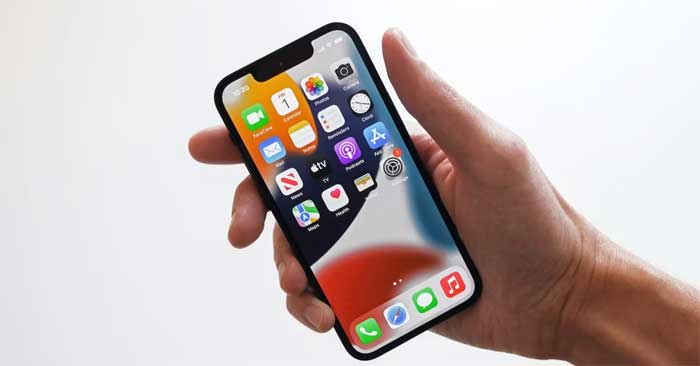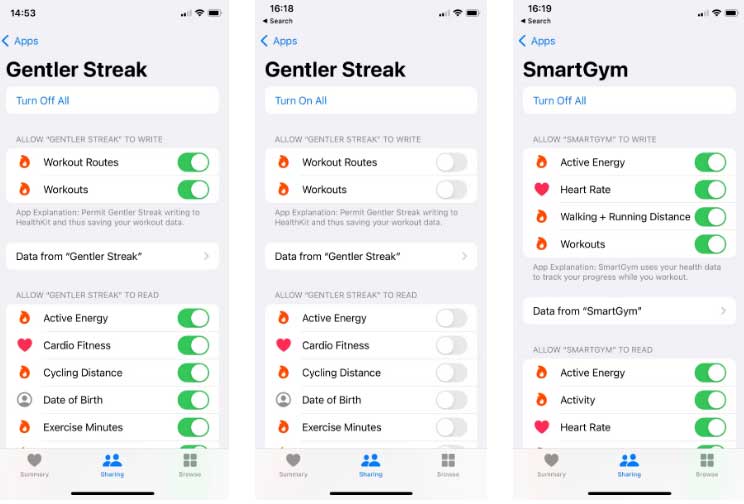To manage data syncing and permissions for your health apps, you can choose to control which apps have access to Apple Health. If you prefer not to have all your health apps sync data with Apple Health, follow these steps to grant or change permissions:
1. Open the Apple Health app.
2. In the toolbar at the bottom of the screen, select “Sources”.
3. Here, you will find a list of all the health apps connected to Apple Health.
4. To grant an app permission to sync data with Apple Health, click on the app’s name.
5. In the app’s settings, you can enable or disable specific data categories that the app can access and write data to.
6. To change permissions for an app, select the app’s name and adjust the settings according to your preferences.
By selectively granting permissions and adjusting app settings, you can have more control over which health apps have access to your Apple Health data.

Apple has consistently prioritized health and fitness, providing iOS users with the exceptional Apple Health app. Alongside its own tracking and monitoring capabilities, Apple also enables third-party apps to seamlessly integrate with Apple Health and exchange vital health information.
Enhance your experience with health data on your iPhone and Apple Watch by gaining increased control. Discover how you can conveniently manage the applications that exchange data with Apple Health.
Find Out Which Apps Can Connect to Apple Health
There are currently numerous applications that have the capability to share data with Apple Health. Upon initial installation of such an app, users are prompted to enable or disable data sharing. Regardless of the initial choice made, all preferences can be adjusted at a later time within the settings of the Health app.
To easily view the apps that you have authorized to share information with Apple Health, simply access the Health app and navigate to the Sharing section. Located at the bottom of the screen, you can find the Sharing button. Within the available options, select Apps. Once there, you will find a comprehensive list of each app and their respective sharing permissions. Be aware that any app that necessitates permissions to update Health data will be automatically included in this list.
 Types of Exercises
Types of Exercises
There are many different types of exercises that you can do to improve your fitness and overall health. These include cardio exercises, such as running, swimming, and cycling, which help to improve cardiovascular fitness and burn calories.
Strength training exercises, such as weightlifting and resistance training, help to build and tone muscles.
Flexibility exercises, such as yoga and stretching, help to improve the range of motion in your joints and prevent injuries.
Balance exercises, such as tai chi and balance board exercises, help to improve stability and prevent falls.
It’s important to incorporate a variety of exercises into your fitness routine to target different muscle groups and aspects of fitness.
Beginner Route
Perfect for those new to training and looking to improve their fitness.
- Easy pace running
- Interval training
- Strength conditioning
Intermediate Route
Designed for individuals who have some experience in training and want to take their fitness to the next level.
- Tempo runs
- Hill sprints
- Resistance training
Advanced Route
For elite athletes seeking to push their limits and achieve peak performance.
- Speed workouts
- High-intensity interval training
- Plyometric exercises
Distances Traveled by Various Activities
This page provides information on the distances that can be traveled by walking, running, cycling, or swimming.
Running Metrics
Below are some of the key metrics that can be tracked during a run:
- Power: Measures the amount of energy exerted while running
- Speed: Measures the velocity at which you are running
- Stride: Measures the length of each step taken while running
- Ground contact time: Measures the amount of time your foot stays in contact with the ground during each step
Swimming Metrics
are measurements and data collected during swimming activities to help analyze and improve performance. These metrics can include time, distance, stroke rate, stroke count, and heart rate, among others.
By tracking and analyzing swimming metrics, swimmers and coaches can identify strengths and weaknesses, set goals, and make adjustments to training plans. It can also help in comparing performance across different training sessions or competitions.
can be tracked using various tools and technologies, such as wearable devices, GPS trackers, and swimming-specific sensors. These tools provide real-time data and feedback, allowing swimmers to make immediate adjustments and improvements.
Overall, swimming metrics play a crucial role in the sport, enabling swimmers to optimize their performance, technique, and training strategies. With the right analysis and interpretation of swimming metrics, athletes can enhance their skills, achieve their goals, and reach their full potential in the water.
To customize the information you wish to share, you can easily toggle the switch for each category. Furthermore, you have the option to select “Turn Off All” at the top of the page to revoke all access privileges.

Below are some steps on how to view and share health data using Apple Health. We hope that this article proves to be informative and beneficial for you.
Uncover the secret Feng Shui master’s tips for decluttering your home to invite wealth and abundance in the Year of the Ox 2021.
With the Lunar New Year approaching, every family is busy shopping and tidying up their homes to welcome the new year with a fresh start. However, according to Feng Shui beliefs, it is important to clean the house at the end of the year in a way that aligns with good Feng Shui principles and avoids any Feng Shui taboos that could potentially bring negative energy and affect the overall luck of the family in the new year. This knowledge is not widely known to everyone.






































